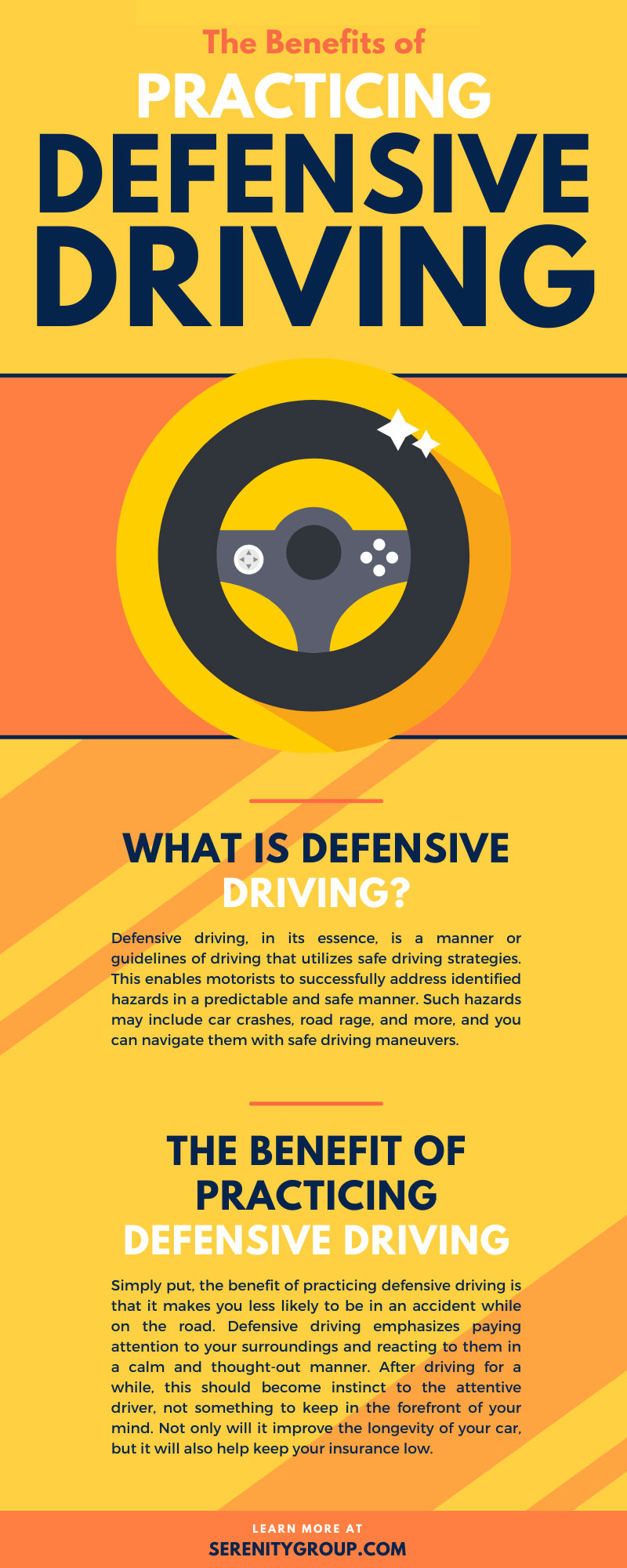The Benefits of Practicing Defensive Driving

Defensive driving is one of the most important skills that a driver can have in a dangerous situation on the road. In practice, defensive driving can be essential to a driver’s safety, as, in some respects, it provides a safety net that allows you to be a more conscientious driver. This article will discuss what defensive driving is, the best ways that you can exhibit it, and the benefits of defensive driving.
What Is Defensive Driving?
Before we start into the whole subject of defensive driving, we must explain what defensive driving is in the first place. Defensive driving, in its essence, is a manner or guidelines of driving that utilizes safe driving strategies. This enables motorists to successfully address identified hazards in a predictable and safe manner. Such hazards may include car crashes, road rage, and more, and you can navigate them with safe driving maneuvers.
One of the most optimal ways to learn about defensive driving is to take a class. Both the DMV services of each state and private businesses help to operate many of these classes. The courses usually cover the appropriate responses that one should exhibit in a given situation that the average motorist will encounter while driving.
Best Defensive Driving Practices
To stay safe on the road, you need to be awake, alert, and ready to react at a moment’s notice. Following these defensive driving practices can help you detect—and respond—to potential hazards before they become dangerous.
Safety First
By avoiding and preventing aggressive and inattentive driving techniques, you will put yourself in a better position to deal with other people’s bad driving than if you were not actively paying attention. In addition, leaving plenty of space between your vehicle and the car in front of you can give you a buffer zone in case anything goes awry. Lastly, always wear your seatbelt to protect yourself from flying from the car in a crash.
Pay Attention to Your Surroundings
Check your mirrors frequently and scan conditions on the road 20 to 30 seconds ahead of you. Keep your eyes moving, scanning all sides of the road and all lanes. If a vehicle shows signs of aggressive driving, such as swerving or wandering, slow down or pull over to avoid it. If the aggressive driver is driving so dangerously that you’re worried for your safety, try to get off the roadway by turning right or taking the next exit when it is safe to do so. If you are on a residential or surface street, be sure to keep a lookout for any pedestrians.
Do Not Depend on Other Drivers
When on the road, it is best to be considerate of others, but look out for yourself at the same time. In any situation, never assume another driver is going to move out of the way or allow you to merge if a lane is ending. Assume that every driver you encounter will run through red lights or stop signs. Knowing this, always plan your movements, constantly anticipating the worst-case scenario.
Follow the Three to Four Second Rule
In almost every accident, the area with the greatest chance of collision is the area in front of you. Using the three-to-four-second rule will help you establish and maintain a safe following distance, which provides adequate time for you to brake to a stop if necessary. The three-to-four-second rule is based on the average time it takes a car to make an immediate stop when starting at highway speeds. This usually equates to about three or four car lengths. But this rule only works in normal traffic under good weather conditions. In bad weather, increase your following distance by an additional second for each condition such as rain, fog, nighttime driving, or following a large truck or motorcycle. Remember that during a rain or snowstorm, the roads can get slippery and make you lose traction. This can have horrible consequences and is one of the more common causes of accidents in inclement weather.
Keep Your Speed Down
It is important to remember that in all cases, the posted speed limits apply to ideal conditions. It’s your responsibility to ensure that your speed matches weather conditions. To maintain control of your vehicle, you must control your speed. This is because your vehicle becomes much more difficult to control at higher speeds, resulting in a higher chance that something will go wrong—not to mention that you could be ticketed with reckless driving even if going at the speed limit in certain situations.
Have an Escape Route
One of the best ways to avoid potential road dangers is to position your vehicle where you have the best chance of seeing and being seen in all driving situations. Remember that in certain situations, simply slowing down is the best move in creating your own space if you can do it safely. Having an alternate path of travel is also essential, so always leave yourself an out—a place to move your vehicle if your immediate path of travel is suddenly blocked.
Separate Risks
When faced with multiple risks, it’s best to try to manage them one at a time. Your goal is to avoid having to deal with too many risks at the same time. By taking yourself out of a situation with multiple risks, you are increasing your chance of being safe and the effectiveness of your defensive driving.
The Benefit of Practicing Defensive Driving
Simply put, the benefit of defensive driving is that it makes you less likely to be in an accident while on the road. Defensive driving emphasizes paying attention to your surroundings and reacting to them in a calm and thought-out manner. After driving for a while, this should become instinct to the attentive driver, not something to keep in the forefront of your mind. Not only will it improve the longevity of your car, but it will also help keep your insurance low.
We hope that you have enjoyed our article on the benefits of defensive driving. If you are in need of cheap SR-22 car insurance for California, reach out to Serenity Group today!


Recent Comments